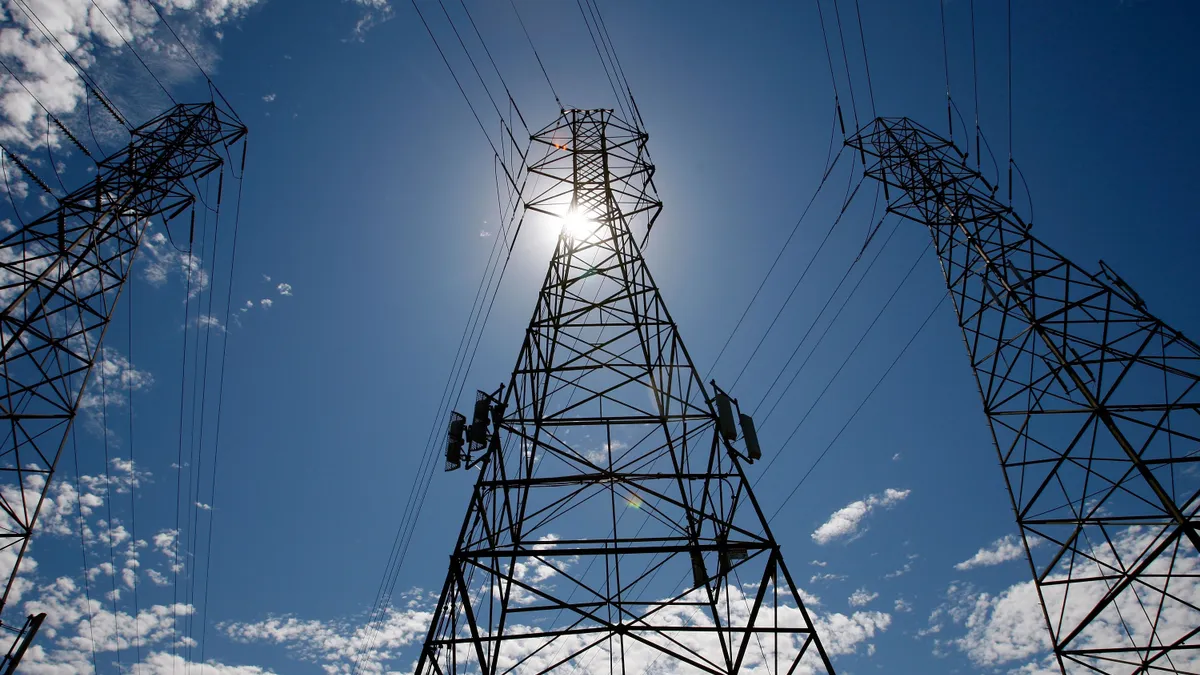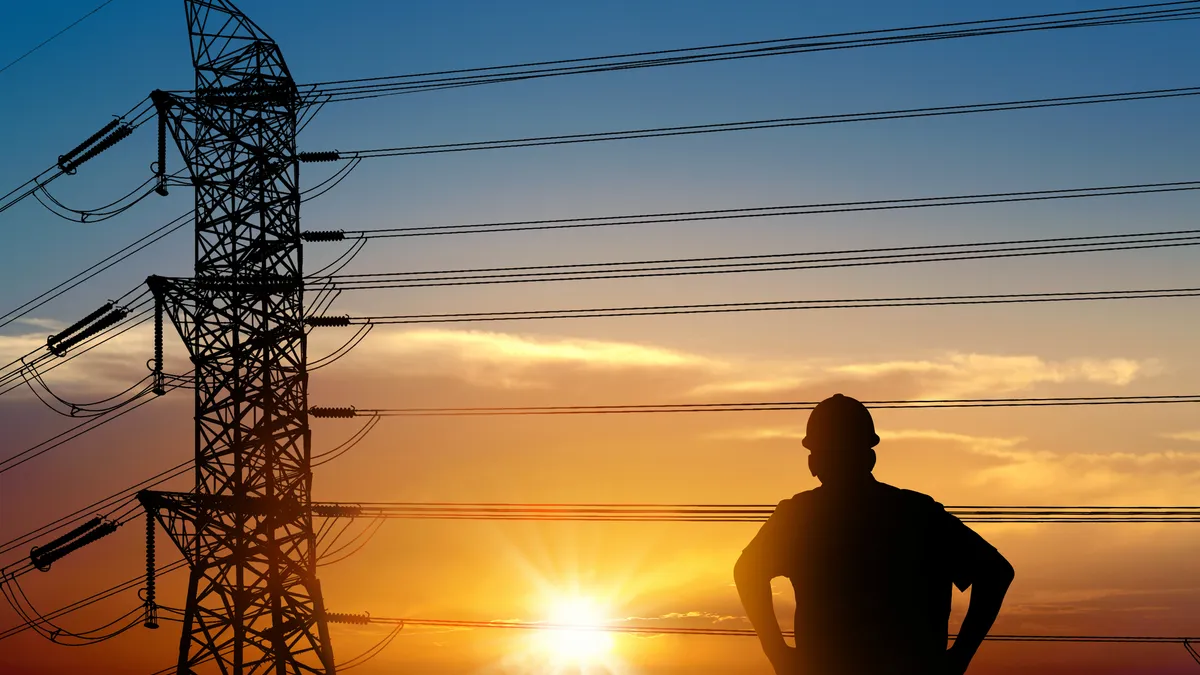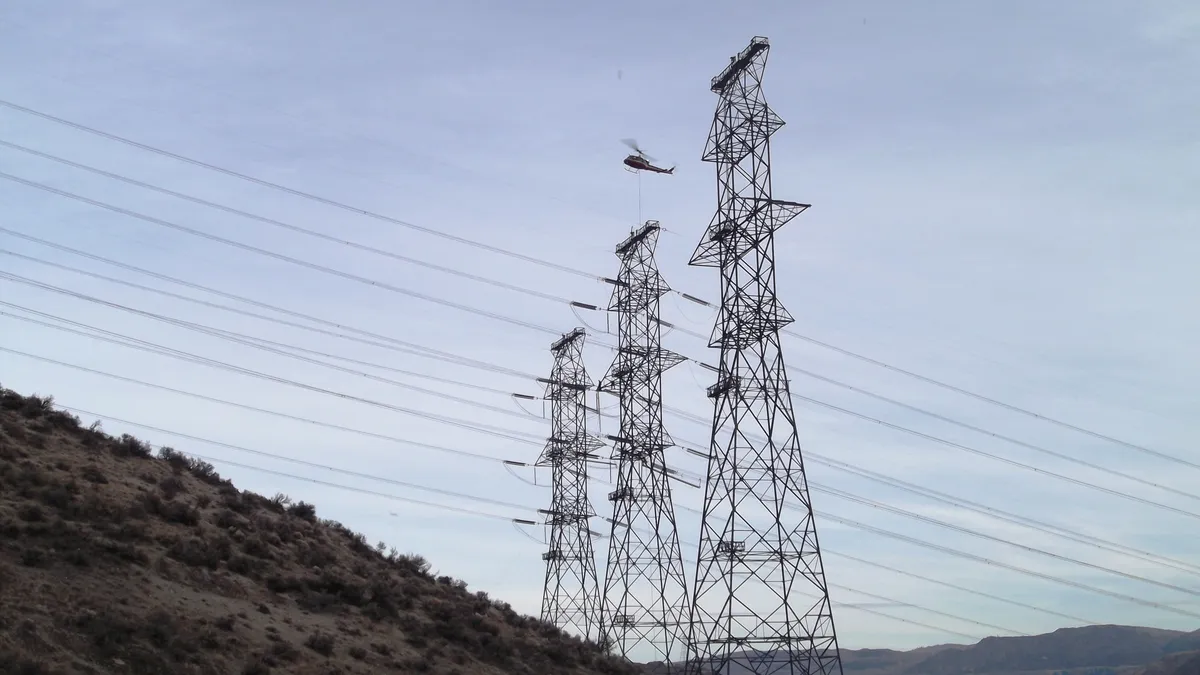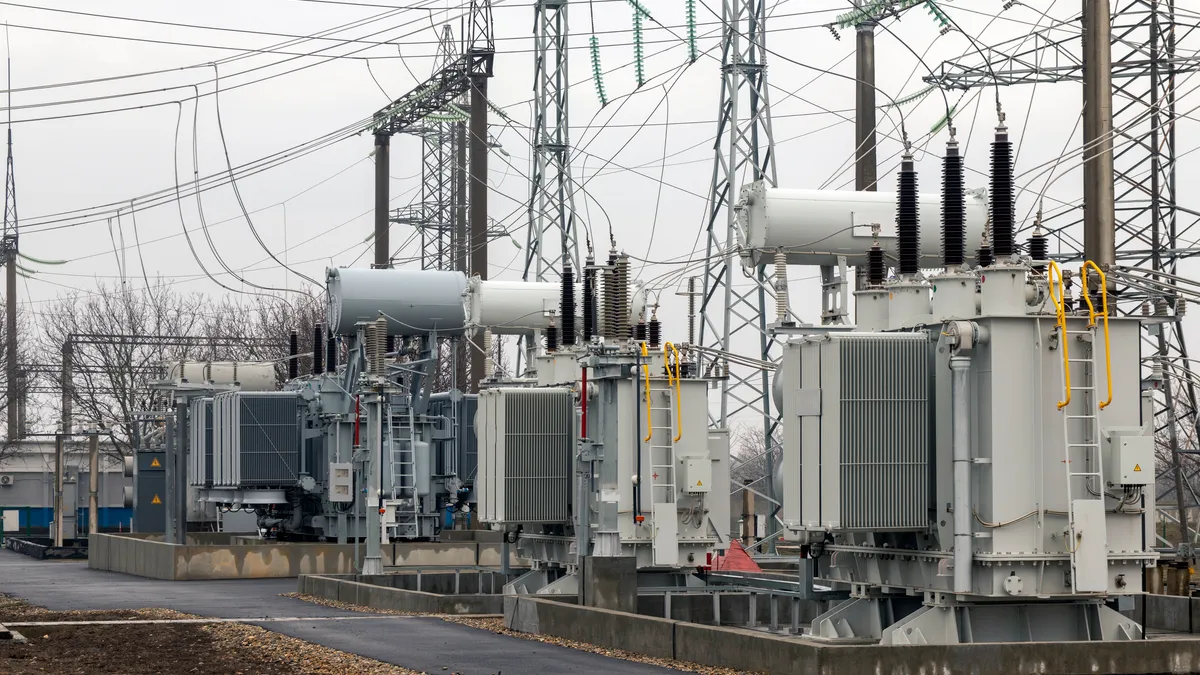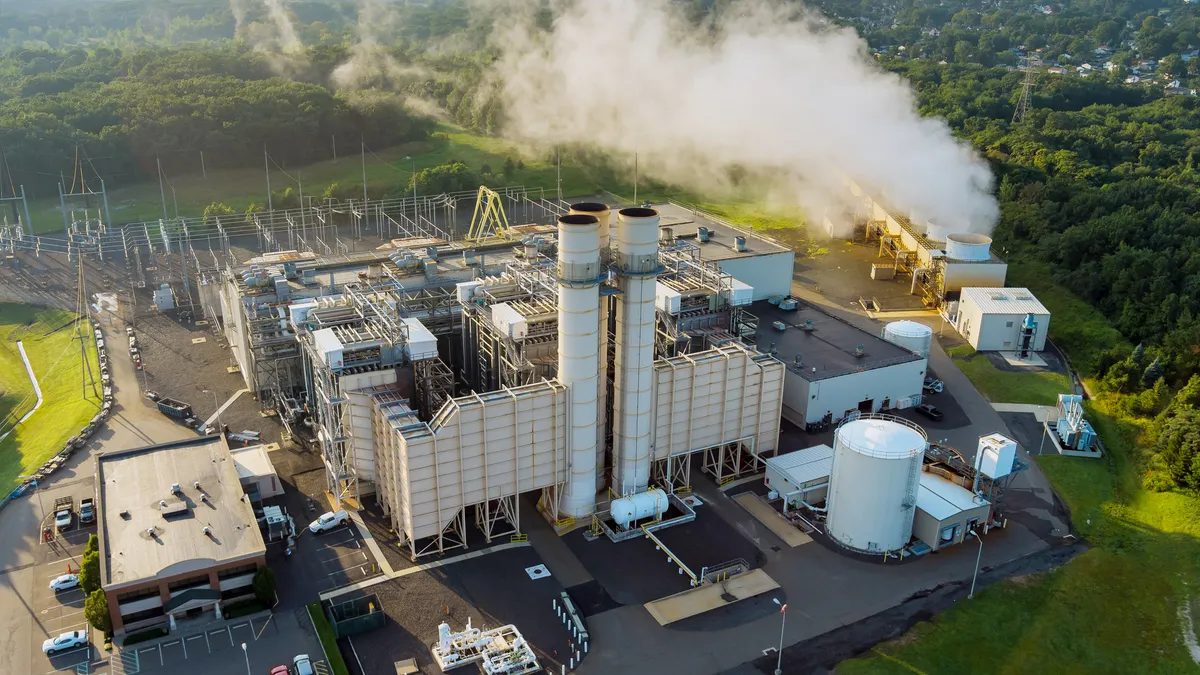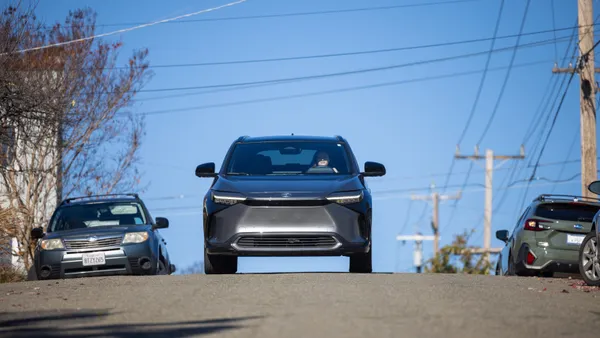North American Electric Reliability Corp. CEO Jim Robb spoke Thursday at the WIRES summer meeting, laying out the challenges and opportunities that a changing resource mix creates for the North American energy system.
“We are in a pretty amazing period of time for the electric grid, because of the pace of change that we're seeing, and the fact that it's coming at the grid from a number of different directions at the same time,” he said. “We're having to rethink a lot of things.”
Historical planning approaches are not as effective as they once were, as weather has become more extreme. Physical and cyber attacks are on the rise, while generation retirements are threatening reliability. Utilities see electricity demand rising for the first time in years, Robb said.
NERC was formed in 1968 to address issues related to a blackout three years prior that left 30 million people in the U.S. and Canada in the dark. For decades, the organization focused on the basics of utility operations, like vegetation management, situational awareness, training and communications, Robb said.
“And now we're into a lot of very frontier issues where we need to understand the science at the same time [that] we're trying to draft requirements — and that's obviously challenging all of us to rise to the occasion,” Robb said.
Here are five takeaways from Robb’s speech.
Another 100 GW of retirements could further threaten reliability
NERC published its annual Long-Term Reliability Assessment in December, warning that rising peak demand and the planned retirement of 83 GW of fossil fuel and nuclear generation over the next 10 years creates blackout risks for most of the United States. In particular, the Northeast and Western half of the U.S. face an elevated risk of blackouts in extreme conditions, while parts of the Midwest and central South areas could see power supply shortfalls during normal peak operations.
The next LTRA will likely show the risk is growing, as new data center loads are added into the assessment, Robb said. Electricity demand from data centers could double by 2030 to consume 9% of U.S. electricity generation, according to the Electric Power Research Institute.
And NERC is aware of another possible 100 GW of capacity at risk of retirement in the PJM, Mid-Atlantic and South areas.
Right now those areas are characterized as having a “normal energy risk,” but the next LTRA “will almost certainly put those areas into the high-risk category if those retirements get solidified,” Robb said.
2 TW of capacity in interconnection queues
While increasing thermal retirements are driving reliability risks, renewables developers are working to bring on new resources quickly. Interconnection queues are “now twice the size of the existing resource base of the country,” Robb said.
There are about 2 TW of projects looking to connect to the grid, though there is some double counting in that figure, he said. Meanwhile, existing capacity today is about 1 TW.
“That 2-to-1 ratio is stunning ... Typically, the aggregate interconnection queues are about half to a third of the installed base,” Robb said. “So that shows how much investor interest there is in new generation resources,”
And the vast majority of the proposed projects are wind and solar, “with a smattering of batteries, a little bit of gas, no coal, no nuclear of any consequence, and no hydro. So it's very, very clear that as we move forward, the lion's share of new additions we'll see on the grid will be largely variable resources,” Robb said.
Electric-gas coordination is vital
The transition to a renewables-heavy resource mix will require natural gas generation and greater coordination between the gas and electric systems, Robb said.
“It's not that I love natural gas so much, but I really love natural gas generation,” Robb said, pointing to its ability to operate reliably and flexibly on a dispatchable basis.
“We need to be paying really, really close attention to securing the balancing resources to integrate variable resources reliably,” he said. “Long term, we may come up with a long-duration battery technology that can be used. Hydrogen in some areas may play a role in that. But right now, really the only way to deal with that is natural gas.”
That means the gas and electric systems must work in tandem, he said.
“We think of these two systems as being increasingly interdependent and interconnected, not just two parallel systems that happened to grow up together and have some marriages of convenience,” Robb said. “They're now intimately linked ... electricity is now 40% of gas consumption in the U.S.”
Grid faces a ‘toxic soup’ of security threats
Along with risks related to the clean energy transition, cyber and physical threats are growing, Robb said.
“We're living in an absolute toxic soup of security threats,” he said. “And I think over the last four years, the threat environment, both for physical and cybersecurity has really changed.”
Utilities must defend against the “big four” nation state adversaries of Iran, China, Russia and North Korea and the organized cyber criminals that they sometimes sponsor, Robb said. And then there are the “punks, thugs and crooks” focused on ransomware and physical attacks.
The cyber risk is “driven by the fact that we have software embedded everywhere [but] we rarely know exactly where the coding came from,” he said. The National Institute of Standards and Technology publishes a list of vulnerabilities and it is averaging about 60 entries a day, Robb noted.
Once a vulnerability is published, chief information security officers must determine the extent of the exposure and how to mitigate it, at the same time hackers look for ways to exploit it. “It becomes a foot race, to figure out how to defend against it while [hackers] are trying to figure out how to exploit it,” Robb said.
There has been a similar threat shift on the physical side, Robb said. Substation attacks in Moore County, North Carolina, knocked out power to about 40,000 customers in December 2022, and similar incidents have been seen in Idaho and Washington.
“The ability of adversaries to physically attack different pieces of infrastructure, and be able to create a wider spread event, is of increasing concern,” Robb said. “So we have to be paying really, really close attention to physical and cyber [security] hygiene.”
Transmission study a ‘bigger beast’ than anticipated
NERC, at the direction of Congress, is in the process of developing an interregional transfer capability study that will be delivered to the Federal Energy Regulatory Commission by December 2. Following that, NERC will produce an analysis in the first quarter of 2025 to evaluate transfer capabilities from the United States to Canada and between Canadian provinces.
“This turned out to be an even bigger beast than we thought it was when we started,” Robb said. NERC published an initial report on the study in June, providing context and study details.
“What we're looking at is not trying to optimize price or cost, but looking at optimizing reserves,” Robb said. “The challenge with interregional transfer assessments is that it really has a little bit to do with the wires but it's got a lot to do with the generating resources in the various planning areas and the loads and the nature of the weather patterns that we're dealing with.”
NERC is doing scenario analysis, using historical data on big storms to pressure test the system. “We also have to forecast where we think new generation will come in and what it will look like, and how it would be impacted by those weather systems,” Robb said.
Early insights from the work show that regional transmission capacity is very different in summer and winter, and it's not very evenly distributed, he said. NERC plans to publish another report in August that will lay out the current transfer capability, and then around November will disclose where additions are likely to provide value.
“There's not going to be a lot of time from the time we ... publish our draft report to when we have to file it at FERC. So I'm encouraging everybody to try to engage in the webinars that we're having to get points of view across earlier rather than later because there's not going to be a lot of review time,” Robb said.



